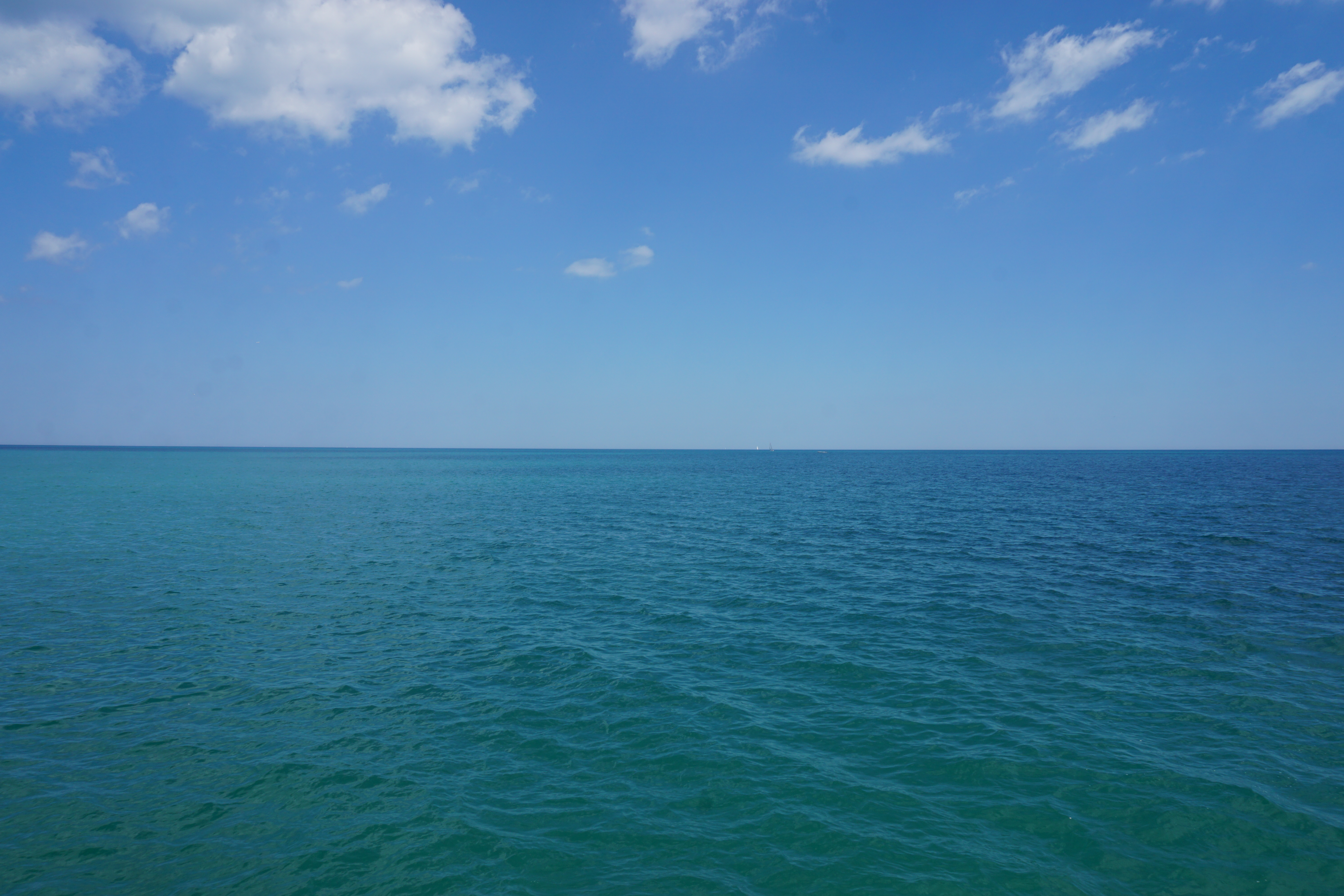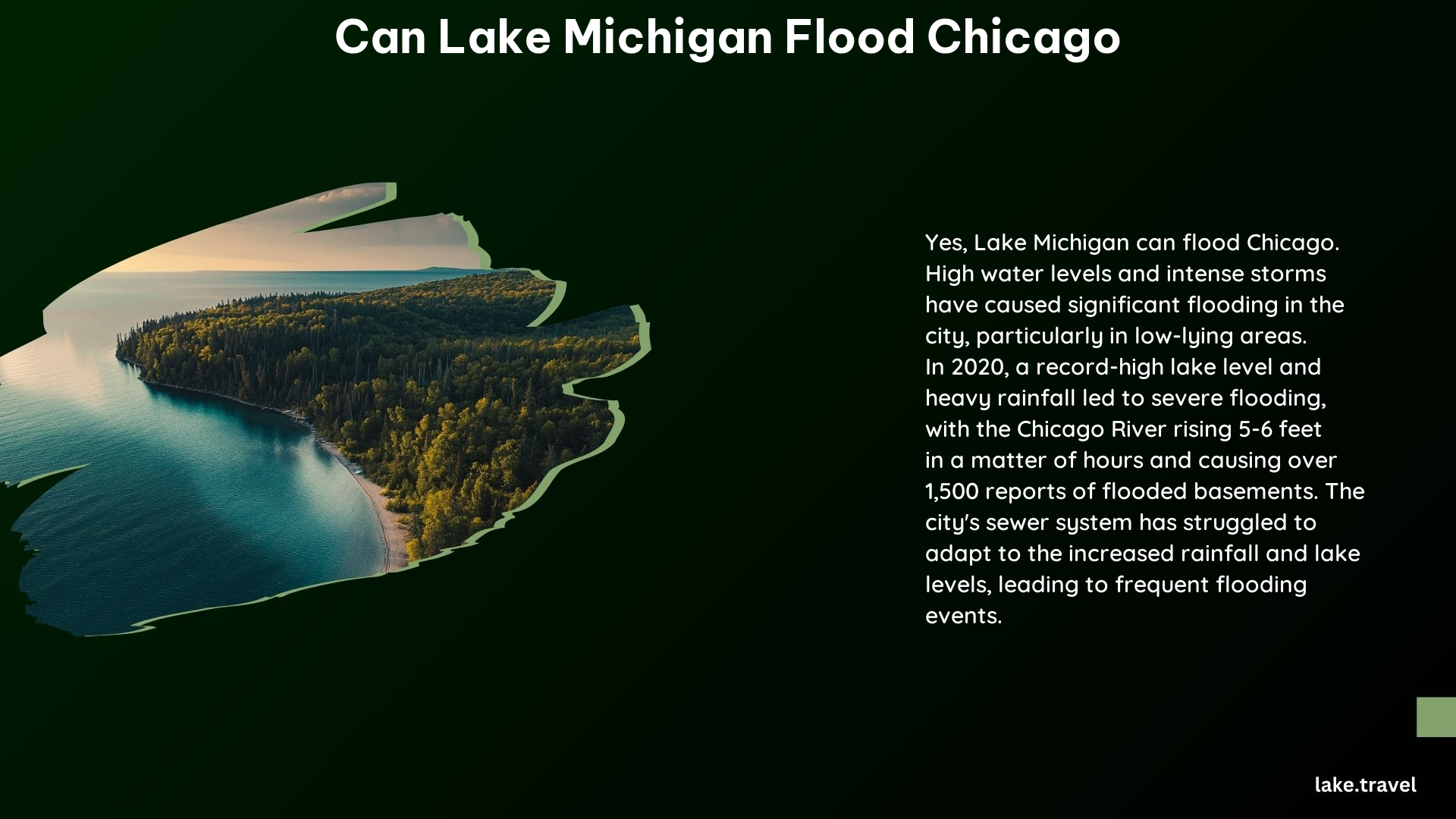Yes, Lake Michigan can flood Chicago. The city’s sewer system has struggled to adapt to the drastic swings in the lake’s water levels, which have been exacerbated by climate change. This has led to frequent and intense flooding events in the city, particularly in low-lying areas near the lake.
High Water Levels and Storm Surges

Lake Michigan’s water levels have been rising due to a combination of factors, including increased precipitation and reduced evaporation. This has resulted in record-high water levels, which have caused significant flooding in Chicago. The lake’s high water levels, combined with storm surges, have led to the flooding of low-lying areas, including beaches, parks, and trails.
According to the National Weather Service, Lake Michigan’s water levels have reached record highs in recent years, with the lake reaching a peak of 582.35 feet above sea level in 2020. This is the highest level recorded since the 1980s and has contributed to the increased risk of flooding in Chicago.
Flooding Impacts

The flooding caused by Lake Michigan’s high water levels has had significant impacts on the city. In May 2020, a storm surge caused the Chicago River to rise 5-6 feet in a matter of hours, leading to over 1,500 reports of flooded basements. The flooding also caused significant damage to infrastructure, including the Willis Tower, and disrupted daily life in the city.
The flooding has also had a disproportionate impact on low-income and minority communities in Chicago. Residents in areas like the South Side have been fighting to protect their homes and communities from the encroaching water, with many facing the risk of losing their homes due to the flooding.
Erosion
Climate change has also contributed to erosion along the lake’s shoreline. The increased frequency and intensity of storms have caused significant erosion, washing away beaches and damaging private property. This has led to the loss of valuable public spaces and has put many residents at risk of losing their homes.
According to a report by the Chicago Department of Transportation, the city has lost over 1,000 feet of shoreline due to erosion since the 1980s. This has led to the loss of beaches and public spaces, and has put many residents at risk of losing their homes.
Measures to Prevent Flooding
To mitigate the effects of flooding, the city has implemented various measures, including:
- The Deep Tunnel: A 20-billion-gallon system designed to store excess sewage and runoff until it can be processed. While it helps reduce flooding events, it was not designed to contain the volume of runoff from heavier storms.
- Rain Gardens: Low-cost solutions that involve lowering street curbs to draw runoff into gardens, reducing the amount of runoff that enters the sewer system.
- Permeable Pavement: Porous pavement that allows rainwater to soak into the surrounding soil, reducing runoff into the sewer system.
- Basins with Trees and Native Plants: Diverting runoff into basins with trees and native plants, which also reduce the amount of tap water used for outdoor plants.
Despite these measures, the city’s infrastructure has struggled to keep up with the increased frequency and intensity of flooding events. The city has also faced challenges in securing funding for additional flood mitigation projects.
Climate Change Contribution
Climate change has significantly contributed to the increased risk of flooding in Chicago. Warmer winters have led to increased evaporation, causing lake levels to fluctuate aggressively. This, combined with more frequent and intense storms, has put a strain on the city’s sewer system and infrastructure.
According to a report by the Union of Concerned Scientists, the Midwest region, including Chicago, is expected to see an increase in the frequency and intensity of heavy rainfall events due to climate change. This will continue to put pressure on the city’s infrastructure and increase the risk of flooding.
In conclusion, Lake Michigan can and does flood Chicago, with significant impacts on the city’s infrastructure, economy, and residents. While the city has implemented various measures to mitigate the effects of flooding, the challenges posed by climate change continue to put the city at risk. Addressing these challenges will require a comprehensive and long-term approach to flood mitigation and infrastructure investment.
